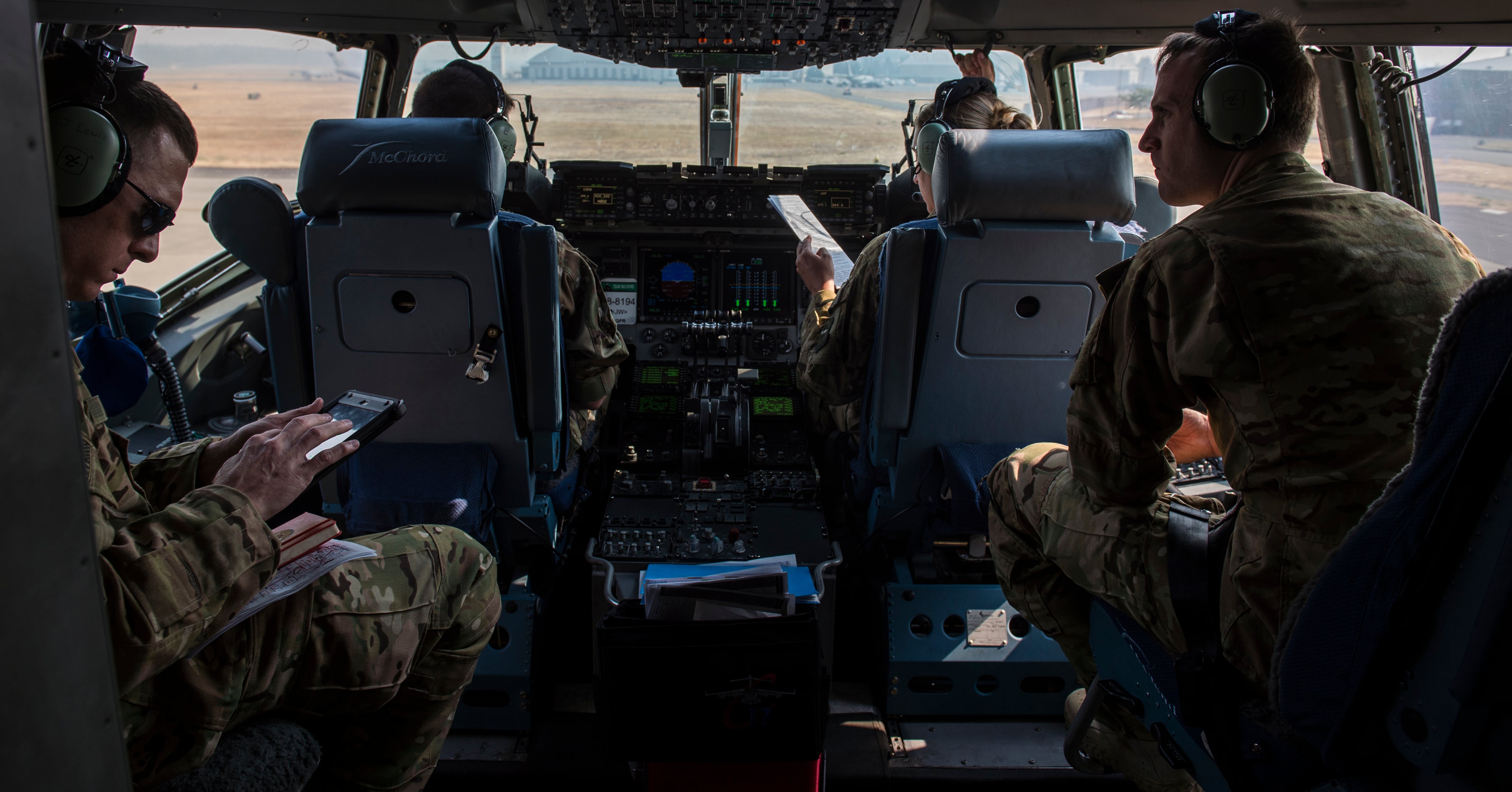Air Mobility Command on Sunday began its second Mobility Guardian exercise — its largest readiness exercise to date — including a vast array of large transport and refueling aircraft and more than 4,000 aviators from multiple services and nations.
Mobility Guardian 2019 is intended to allow mobility aviators to practice their skills in simulations of real-world, challenging scenarios that they would likely face during a conflict, including “contested, degraded and operationally limited environments,” AMC said in a Monday release.
The exercises will help aviators practice airlift, air refueling, aeromedical evacuation and global air mobility support during forcible entry, airfield seizure, strategic deterrence and humanitarian relief operations, AMC said.
Various components of the Air Force, to include Air Combat Command, have increasingly focused on practicing how they might deploy and carry out their missions in contested environments, all part of the Pentagon’s renewed focus on a return to “great power competition.” If a conflict were to break out with a major nation such as China or Russia, Air Force leaders have said they cannot count on using established, well-defended bases or flying in largely uncontested airspace, and must be ready to operate in challenging conditions.
Mobility Guardian, which will run until Sept. 28 at Fairchild Air Force Base in Washington, will include 46 U.S. aircraft — including the KC-10 Extender, KC-135 Stratotanker, C-5 Super Galaxy, C-17 Globemaster III and the H and J variants of the C-130 Hercules, as well as planes from 29 allied nations, AMC said. The 4,000 participating aviators will include 2,500 from AMC.
“Unmatched rapid global mobility exists because of the ready and resilient airmen who execute the mission day in and day out,” Gen. Maryanne Miller, AMC’s commander, said in the release. “Training exercises such as Mobility Guardian are critical to ensuring our airmen are able to keep AMC’s promise to always be there for those who depend on us, both today and tomorrow.”
RELATED

The exercise, which first took place at Joint Base Lewis-McChord in Washington in 2017 and is planned to be held every two years, is also expected to improve the way the Air Force works with international partners as well as the Army, Navy and Marine Corps and strengthen their partnerships.
“The future of warfare will be increasingly joint,” Lt. Col. Joseph Monaco, director of Mobility Guardian, said in the release. “This exercise is an unparalleled opportunity to develop joint-minded airmen who can integrate seamlessly with soldiers, sailors and Marines to compete with and, if necessary, win amidst great power adversaries.”
The plans to practice aeromedically evacuate simulated patients will help test how well that interoperability is working.
“We intend to challenge our aeromedical evacuation force to initiate a Theater Aeromedical Evacuation System and transmit the casualty flow in a near-peer type environment,” said Lt. Col. Caroline Mendoza, the exercise’s head planner for aeromedical evacuations. “They will be challenged with massive casualty flow and complex clinical situations where we will be dependent on our total force and interoperable partners to meet the patient demand signal.”
Stephen Losey is the air warfare reporter for Defense News. He previously covered leadership and personnel issues at Air Force Times, and the Pentagon, special operations and air warfare at Military.com. He has traveled to the Middle East to cover U.S. Air Force operations.





